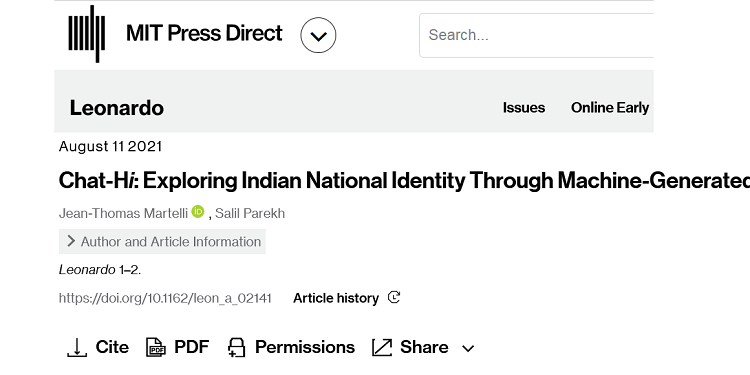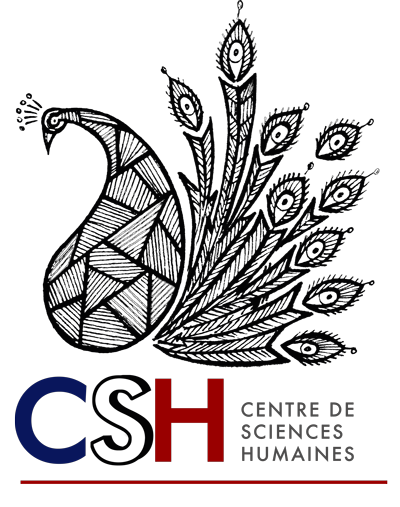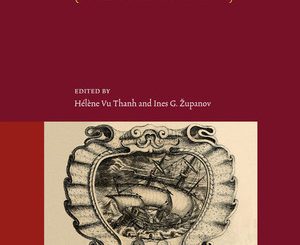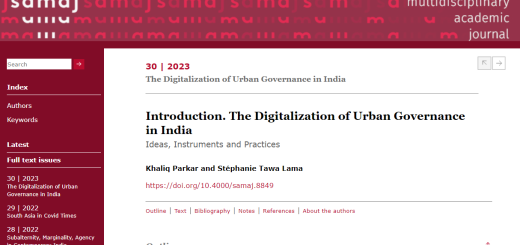Jean-Thomas Martelli, Salil Parekh “Chat-Hi:Exploring Indian National Identity Through Machine-Generated Text.” Leonardo (11 August, 2021).

Jean-Thomas Martelli, head researcher in the Politics & Society department of the CSH and Salil Parekh, The New School (New York), wrote an article entitled “Chat-Hi: Exploring Indian National Identity Through Machine-Generated Text”. Leonardo, MIT Press has published the article on 11th August 2021. The article asks what happens when the political history of India is interrogated in a “conversational” way.
The article is available at:
Extended abstract: https://doi.org/10.1162/leon_a_02141
Full preprint: https://doi.org/10.31235/osf.io/89yqv
Abstract: Situated at the crossroads of computational politics and intellectual history, this article interrogates “Chat-H:”, the prototype of an interactive new media art installation project using a natural language processing model trained on a large database of speeches by Prime Ministers since 1946. Machine learning (ML) powered Chat-Hi: generates analytically intelligible answers to viewers’ questions such as: What is the idea of India? The media installation acts as a conversational archive, a gazing medium and interpretive layer. It fosters playful, intimate, interactive and relational modes of historical attention, inviting participants to actualize the past through present political and social questioning. Building on existing accounts on the inclusive and modernist endeavor of the makers of postcolonial India, we interpret Chat-hi:’s output to revisit the historical argument by contrasting Jawaharlal Nehru’s emphasis on diversity with Narendra Modi’s stress on unity. Far from being anecdotal, this finding subtly signals the majoritarian turn of Indian democracy.
Kewords: new media, art installation, Indian politics, machine learning, Prime Ministers, speeches, intellectual history, unity-diversity, discourse, language model, GPT-2, specters, Chat-Hi:









